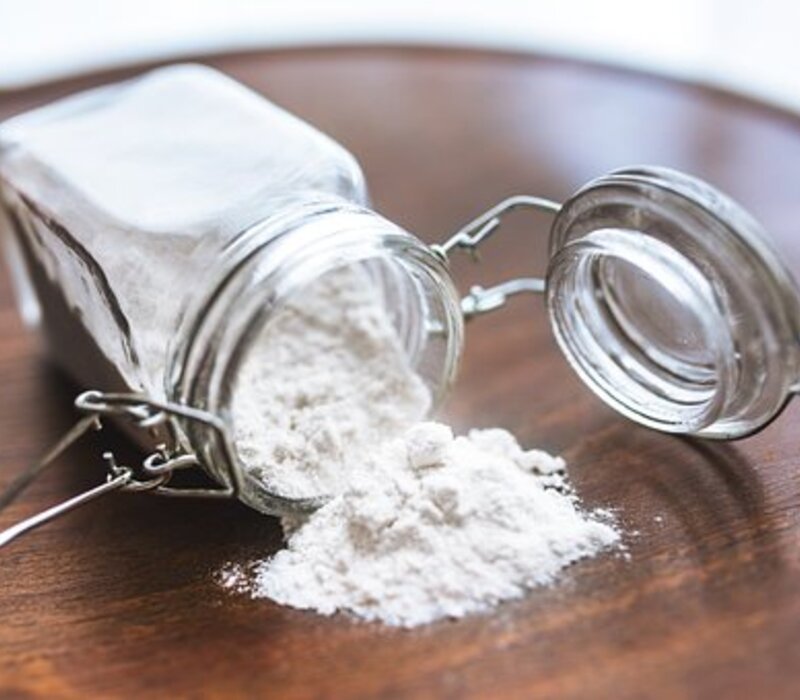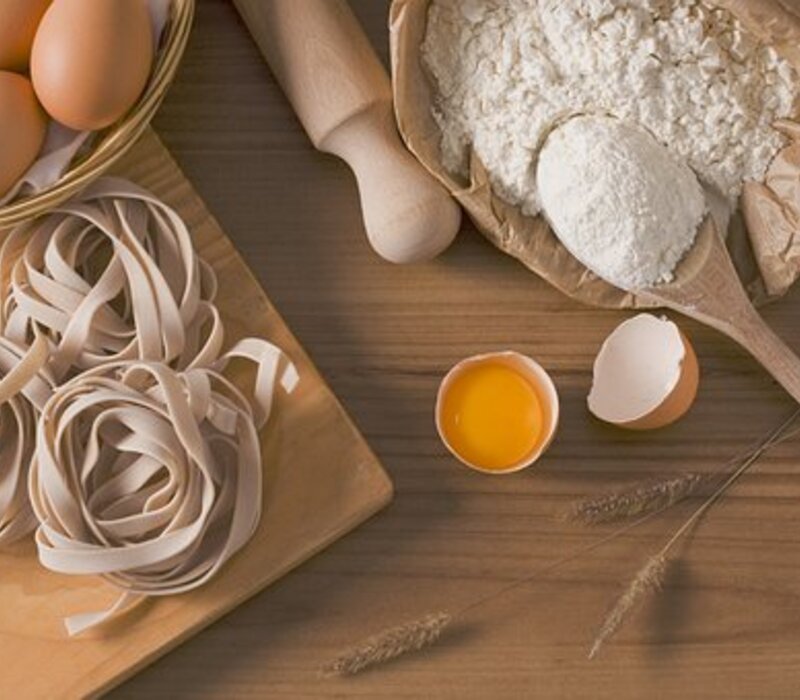One of the things that started my love of cooking was baking. I’ve always enjoyed it as frustrating as it can sometimes be and it’s one of the things that relaxes me. When I first went gluten-free, I struggled to find my groove, but after many tests, I think I’ve nailed it. Flour Quinoa was the best idea.
Today we’re discussing one of my all-time favorite gluten-free flours: quinoa flour!
Page Contents
What is Flour Quinoa
It is a gluten-free, fine powder consisting of dried quinoa seeds or quinoa flakes. You can use it on its own or as part of a gluten-free flour blend. For example, a combination of almond flour, oat flour, rice flour, and chickpea flour.
Quinoa flour lacks the structure of all-purpose flour or another wheat flour, so gluten-free recipes often call for the addition of tapioca starch, sorghum, xanthan gum, or other stabilizers.
Quinoa is a high-protein, nutrient-dense grain that contains many essential amino acids. They make it a good option if you want to increase the nutrients in a recipe. To use quinoa for cooking, you must first soak it in water for at least thirty minutes and then rinse it several times.
This removes the quinoa’s coating, which contains saponins, and chemicals. They protect the plant from disease and bugs but are mildly toxic and have a soapy, bitter taste.

How to Use Flour Quinoa
It has a nutty flavor and adds texture and nutrients to dishes. It makes it a popular addition to gluten-free and vegan foods. Here are three different ways to use quinoa flour:
- Add a spoonful to smoothies. In a high-powered blender, combine frozen fruit, yogurt, milk, and a spoonful or two of quinoa flour in place of protein powder. The quinoa flour contributes protein, thickness, and a nuttiness similar to peanut butter
- Sprinkle quinoa flour into soups. Adding a roux or cornstarch slurry will thicken soups and stews
- But you can add quinoa flour as an alternative. Whisk the soup vigorously while adding the quinoa flour to prevent lumps from forming, or mix the quinoa flour with a little water or broth before adding it to the soup
- Use quinoa flour in gluten-free baked goods. It’s possible to make chocolate cake, pizza crust, waffles, tortillas, and more using quinoa flour. You can even use quinoa flour to make gluten-free bread if you want it to contain more protein than other types of bread
- Gluten-free baking relies on a variety of gluten-free flours, so experiment with quinoa flour in combination with others—plus starches—to achieve your preferred taste and structure in baked goods
Methods for Making Quinoa Flour
It’s possible to make homemade quinoa flour. You can store it in an airtight container at room temperature with your other baking flours. Start with raw quinoa as opposed to cooked quinoa.
After soaking and rinsing the grain, spread it in an even layer on a baking sheet so it can dry thoroughly before you toast and grind it. Here are three appliances you can use to grind quinoa into a fine powder:
- Blender: Add about a cup of quinoa to a high-powered blender and run it quickly to pulverize the quinoa into a fine powder. Turn the blender off before the quinoa turns into a paste
- Run the grain flour through a fine-mesh strainer to separate large pieces from the fine powder
- Food processor: Add toasted quinoa to a food processor bowl and pulse it a few times to break down the quinoa. Then run the food processor at normal speed to grind the ingredient into a finer powder
- Stop the food processor when the quinoa becomes a fine powder but before it begins to clump due to its natural oils releasing. If there are large pieces of quinoa remaining, strain them out with a mesh strainer
- Spice grinder: For smaller batches of quinoa flour, add a few tablespoons of toasted quinoa to a spice grinder or coffee grinder. Press the button to activate the grinder. And gently shake it as it runs to ensure the quinoa moves around inside and each piece breaks down
Health Benefits of Quinoa
Can You Freeze Cooked Quinoa? Nutritious and rich in many minerals and plant compounds, quinoa can be a healthy addition to your diet.
Some data show that quinoa may increase your nutritional intake. However, help reduce blood sugar and triglycerides.
Lower Blood Sugar Levels
People with type 2 diabetes are unable to use insulin effectively, causing high blood sugar levels and various complications.
Refined carbs are linked to an increased risk of type 2 diabetes and heart disease, while whole grains like quinoa are associated with reduced risk.
A study in rats on a high-fructose diet showed that eating quinoa significantly lowered blood cholesterol, triglycerides, and blood sugar, which are all linked to type 2 diabetes.
One human study compared the effects of quinoa with traditional gluten-free wheat products.
Quinoa lowered both blood triglycerides and free fatty acids. It also affected blood sugar levels to a lesser degree than gluten-free pasta, gluten-free bread, and traditional bread.
May Aid in Weight Loss
It has many properties that make it a weight-loss-friendly food.
It’s higher in protein than similar foods, such as rice, corn, and whole wheat.
Protein is considered a key factor for weight loss, as it boosts metabolism and feelings of fullness. In doing so, it may help prevent obesity and related diseases.
Fibers are also important for weight loss, promoting decreased calorie intake by increasing feelings of fullness and improving gut health.
Quinoa is higher in fiber than many whole-grain foods.
The GI value of quinoa is relatively low, and low-glycemic foods have been shown to prevent overeating and decrease hunger.
Quinoa is Gluten-Free
As a gluten-free pseudocereal, quinoa is suitable for people who are intolerant or allergic to gluten, such as those with celiac disease.
Research indicates that using quinoa in a gluten-free diet, instead of other common gluten-free ingredients, dramatically increases the nutrient and antioxidant value of your diet.
Quinoa-based products are well tolerated and may be a suitable alternative to wheat in its original form and products like bread or pasta.
Vitamins and minerals in Quinoa
Quinoa is a good source of antioxidants and minerals, providing more magnesium, iron, fiber, and zinc than many common grains.
Here are the main vitamins and minerals in quinoa:
- Manganese: Found in high amounts in whole grains, this trace mineral is essential for metabolism, growth, and development
- Phosphorus: Often found in protein-rich foods, this mineral is essential for bone health and the maintenance of various body tissues
- Copper: A mineral often lacking in the Western diet, copper is important for heart health (30).
- Folate: One of the B vitamins, folate is essential for cell function and tissue growth and is considered particularly important for pregnant people
- Iron: This essential mineral performs many important functions in your body, such as transporting oxygen in red blood cells
- Magnesium: Important for many processes in your body, magnesium is often lacking in the Western diet
- Zinc: This mineral is important for overall health and participates in many chemical reactions in your body
Adverse Effects
Quinoa is usually well tolerated with no reported side effects.
Similar to most other cereals and grains, quinoa contains phytates. These may reduce your absorption of minerals like iron and zinc.
Quinoa is a member of the Chenopodiaceae family and is thus high in oxalates. Other species in the same family are spinach and beetroot.
These foods may contribute to kidney stone formation in sensitive individuals.
These effects can be reduced by rinsing and soaking quinoa before cooking.
FAQs
Quinoa flour is flour made from ground quinoa seeds. It is an alternative to wheat flour for people who are gluten intolerant or prefer a gluten-free diet.
Yes, quinoa flour is naturally gluten-free, which makes it a great option for people with celiac disease or gluten sensitivity.
Quinoa flour is a good source of protein, fiber, and several important minerals like magnesium, phosphorus, and iron. It is also low in fat and contains a moderate amount of carbohydrates.
Quinoa flour can be used as a substitute for wheat flour in most recipes, but because it has a different texture and flavor, it may not work well in all recipes. It is often used in combination with other gluten-free flour like rice flour or potato starch to improve the texture of baked goods.
You can substitute quinoa flour for all-purpose flour in some recipes, but it may not work well in all recipes. Because quinoa flour is gluten-free and has a different texture than wheat flour, it may not work well in recipes that rely on gluten for structure, like bread.
Quinoa flour has a slightly nutty flavor that may be noticeable in baked goods. If you are sensitive to the flavor, you can try blending it with other gluten-free flours to dilute the flavor.
Quinoa flour can be found in most health food stores or online retailers. You can also make your own by grinding quinoa seeds in a high-powered blender or food processor.




![Naturevibe Botanicals Quinoa Flour, 2lbs | Non-GMO and Gluten Free | Protein Rich [packaging may vary]](https://m.media-amazon.com/images/I/418aJvCwuWL._SL160_.jpg)

![Quinoa Flour, 5lbs by Naturevibe Botanicals (80 Ounces) [Packaging may vary]](https://m.media-amazon.com/images/I/414duwWwDRL._SL160_.jpg)